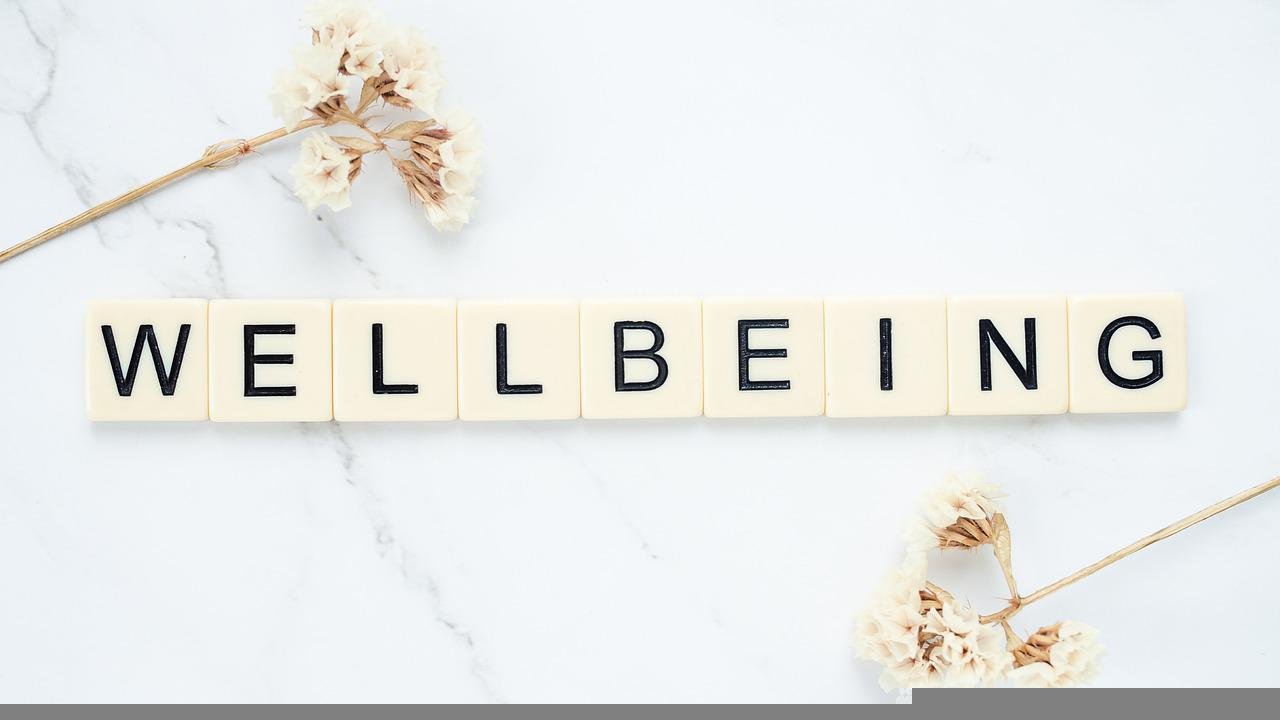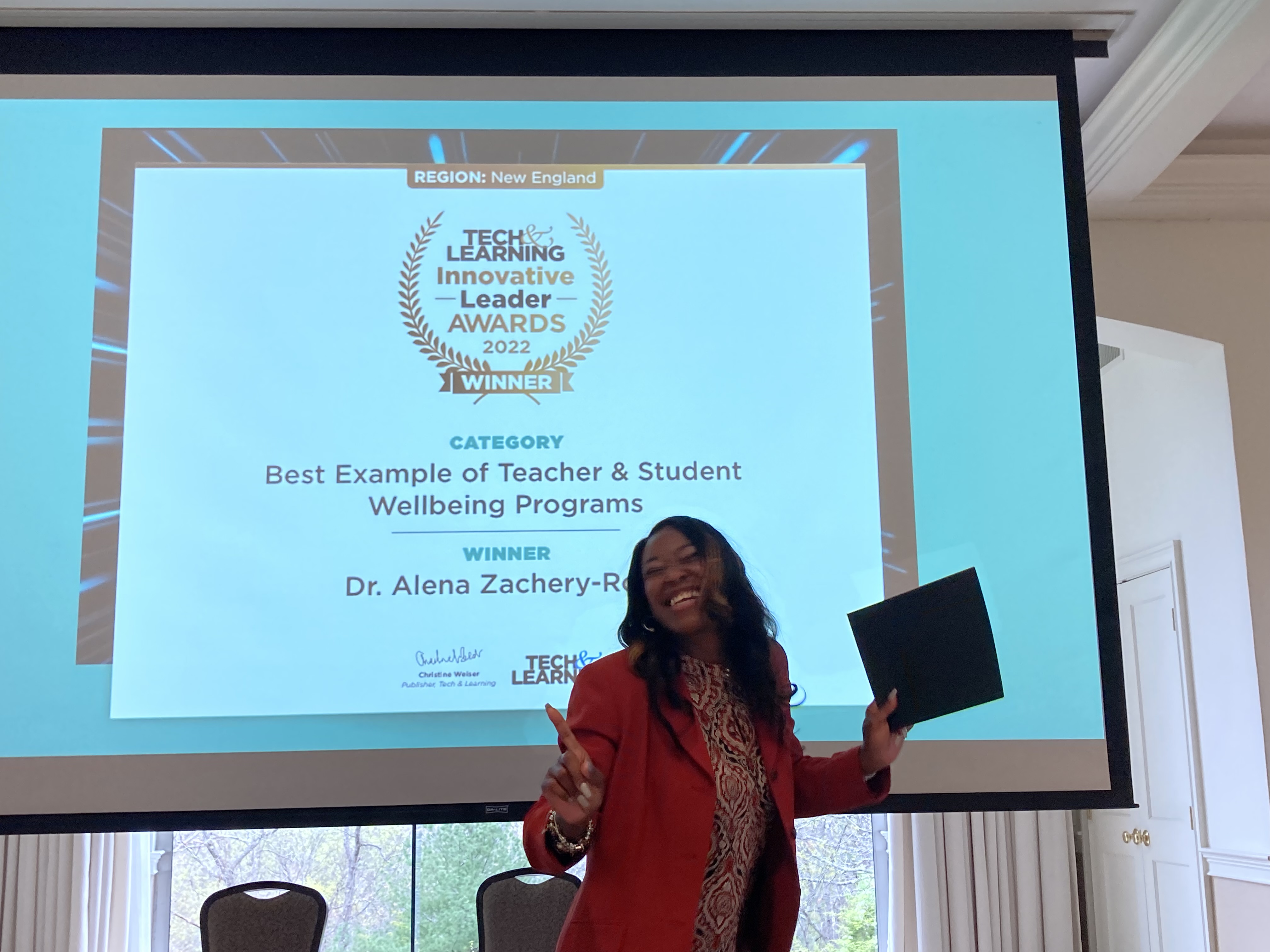Best Practices for School Leaders to Support Well-Being
Under the leadership of Alena Zachery-Ross, Ypsilanti Community Schools in Michigan has developed award-winning wellness programs

As Superintendent of Ypsilanti Community Schools in Michigan, Alena Zachery-Ross led her team to provide exemplary services to students, staff, and community over the last two years. They trained all administrators on the Trauma Resilient Schools through Starr Commonwealth and Elena Agular's work on Onward, hosted monthly events for all staff and quarterly events for families including town hall meetings with mental health professionals, and organized Boots on the Ground activities in their communities.
In addition, the district also created a Resiliency Center that was a one-stop-shop resource for students and families. They also offered food and learning labs right in students' communities to allow them to feel physical and mental safety.
For these efforts and others, Zachery-Ross was recognized with an Innovative Leader Award for Best Example of Teacher & Student Well-Being during Tech & Learning’s recent Northeast Regional Leadership Summit.
However, creating these well-being programs is only the beginning. Long-term support and success requires ongoing effort and commitment to certain best practices.
Nominate someone for the Tech & Learning Innovative Leader Award here

Encourage Ownership
“One of my mottos is, ‘People support what they help create,’” says Zachery-Ross, adding that by doing so, they’re more likely to be enthusiastic and engaged about the project.
For example, the Sunshine Committee, which spreads positivity throughout the district (“cheers for peers”) and consists of staff from various departments, creates monthly opportunities for sharing and learning, both professionally and personally. They’ve organized online cooking classes led by a chef, orchestrated jazz concerts, held dance parties, and shared bitmoji classroom-building tips.
Tech & Learning Newsletter
Tools and ideas to transform education. Sign up below.
“We want them to lead from where they stand, and they’ve had that opportunity,” says Zachery-Ross. “They didn't have to have a role of principal or instructional coach, but each one of them could bring that knowledge through their professional development. They could be the expert, and we give those opportunities for informal and formal leadership.”
Support Teacher Voice and Student Choice
Everyone–educators, students, and families–is fatigued right now, says Zachery-Ross, so creating opportunities for teachers to express their voice has been a priority to boost enthusiasm for learning.
“Teachers and students are burned out, yet when we connect the learning to real-life project-based programs, when we connect the teaching to something the educator is passionate about, instead of feeling drained that person lights up,” she says. “They want to tell people about it. They want to engage our students, and it rejuvenates people instead of diminishing.”
For example, for the district’s summer Grizzly Learning Camp, Zachery-Ross gave teachers freedom to have that voice. “We set up the framework for staff, and said, ‘You know we want specific standards that we're interested in covering over this amount of time. You propose what you would want to teach, what you would want to deliver, how you would like to be innovative and creative, what experience could you create for students, and apply,’” she says.
Consequently, allowing that teacher voice boosted student engagement by providing more choice. “We had over a third of our students attend because teachers connected standards to programs that were of interest to them, that they were passionate about, so it was a true extension beyond what the typical school they looked like,” says Zachery-Ross.
Keep Moving Forward
The pandemic necessitated innovation and new approaches to instruction, and Zachery-Ross encourages that spirit to continue.
“Oftentimes we don't do things because we think our parents are going to be upset,” she says. “We found our students could tolerate new ways of doing things, our staff could tolerate it, as well as families and communities. We found that we're more resilient than we ever thought we would be. And students, quite frankly, did learn through the pandemic. They just learned differently, and acquired skills that we might not have thought they were ready for.” She points out how kindergarten students can now use digital tools, such as Zoom or Google Classroom, that are part of the professional world.
“We need to give opportunities for acceleration,” she says. “That takes these kinds of project-based hands-on relevant educational experiences that might not not look like our traditional programs.”
Focus on the Key Cs
Before the pandemic, the concept of preparing students for jobs that haven’t yet been created was difficult to comprehend, says Zachery-Ross. But now three years later, the importance of developing the skills of learning is just as much a focus as understanding specific content.
“What are things that will sustain?” she says. “No matter what, communication with other people, collaboration with others, being creative, being critical thinkers–there are certain things that no matter if we're in a pandemic or not, that can be sustained. And those are the things that when we talk about connecting this innovation with standards, that will be long-lasting and transferable skills that students can take to college to career to wherever they go.”
Embrace Failure
Of course, during the past two years there have been many challenges, and it’s unrealistic to think that each one was flawlessly resolved.
Zachery-Ross holds an annual “Fail Fest,” during which educators share some of the mistakes they made and chances they took that maybe didn’t work out as planned, and what they learned from these experiences. “Not being afraid to fail and learn is also just not being afraid to fail, right?” she says. “And that’s a hard thing to learn, because we all want to be perfect. We all want to do a good job, but sometimes you don't learn from that absolute and that's something we have to teach our students.”
For example, after getting devices to students for remote learning, Zachery-Ross and her team realized that it wasn’t enough to truly replicate the full learning experience, so they created a “classroom” for home by providing paint, markers, crayons, paper, pencils, and other supplies to students. “We just assume everyone has a whole classroom at home ready to go when remote,” says Zachery-Ross. “We were like, ‘Oh great, we got you a computer, but you don't have any books at home.’ So we should take these experiences from the pandemic and embrace them, and reflect on why we did them.”
Be Present
Leading a district in its education mission is more than setting policies and allocating funds.
“John Maxwell talks about how everything rises and falls on leadership, and leadership to me is about influence,” she says. “How can we influence if we're not there? How can we influence if you don't understand, and the way to understand is to get to know people, so our motto is ‘Stronger Together.’ We can't do it by pointing the finger – I always say people don't follow your fingers, they follow what you do, how you communicate.”
Zachery-Ross says students immediately recognize if you’re authentic, so she tries to stay connected by being as visible as possible while also being her outgoing self. “When you create that sense of belonging, people will run through a wall and want to do work with you,” she says. “In order to truly lead, you can't have an ego. You can't. You have to be humble and even transparent when we do this. And if we're going to create a space that's safe enough to learn in, to truly be ourselves, to have a sense of belonging, then the leader has to show up.”
And that needs to be a trickle down approach of sorts. “If our staff don't feel like they belong, if they don't feel like they're a part, if they don't believe they are making a difference, then how can the staff make our students feel the same way?”
Communicate Clearly
Trying to communicate clearly and without all the education acronyms and terms is a focus of Zachery-Ross. “We use the word well-being, we're using the word social-emotional learning, and that might frighten people,” she says. “Instead, can we ask the questions, ‘Do you see me? Do you hear me? Do you value me? Do you respect me?’ We have to sometimes just make it plain.”
“How about saying, ‘Do I know Joe? Do I know their name? Does someone see me when we show up to work, is someone gonna miss me? If I don't come to school will someone think where am I? Do they value my opinion? Do they respect who I am as a person?’” she says. “If we get down to that core of those simple questions, then we can get to the point of finding what's needed for our students, for our staff, for our families, and then overall for our community.”
Ray Bendici is the Managing Editor of Tech & Learning and Tech & Learning University. He is an award-winning journalist/editor, with more than 20 years of experience, including a specific focus on education.
